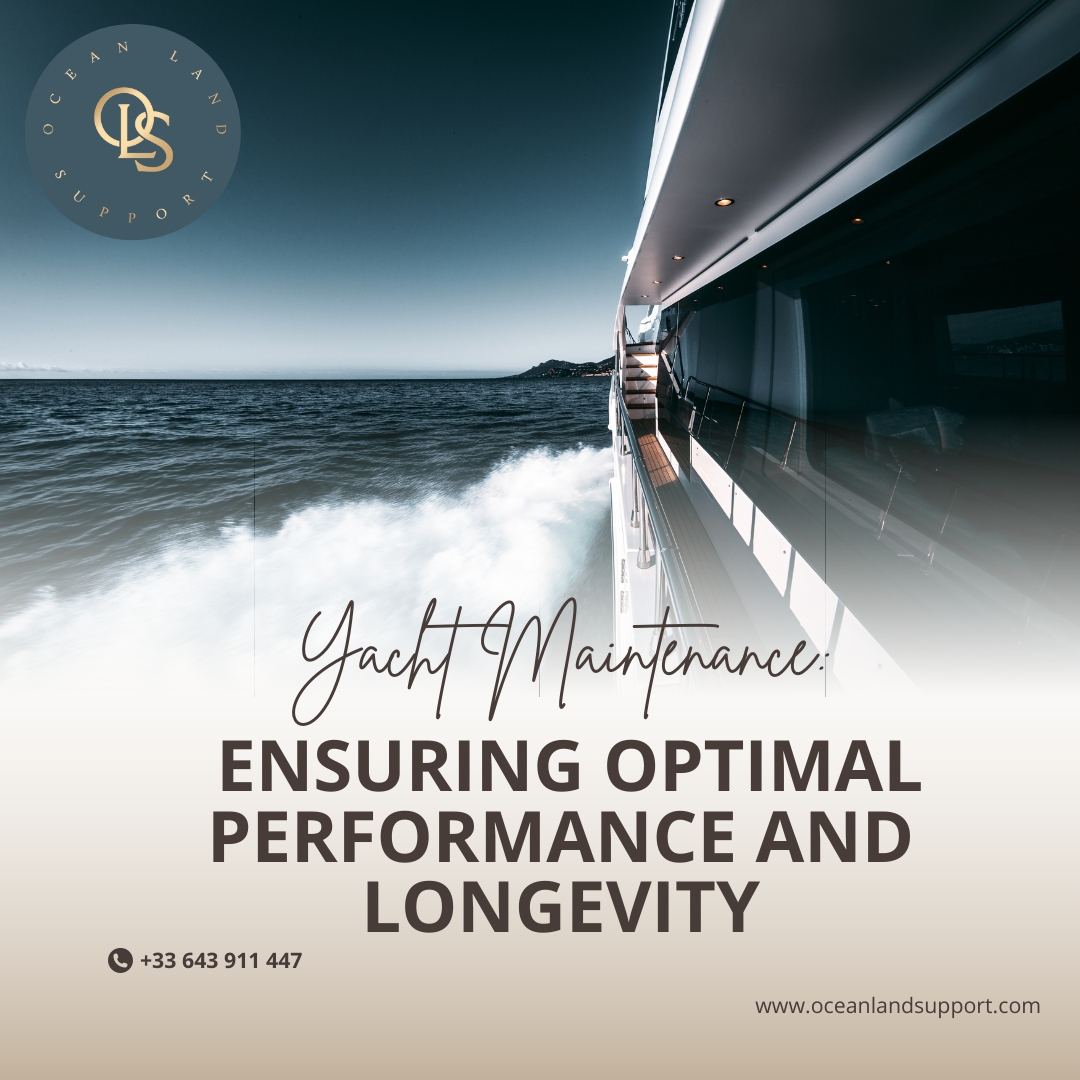Yachts, like any luxury asset, require careful maintenance to ensure optimal performance, safety, and lasting value. Regular maintenance not only enhances the experience on board but also extends the lifespan of the yacht, minimizing costly repairs in the long run. Whether a private yacht owner or a charter company, understanding and prioritizing maintenance is essential. Below, we explore the key aspects of yacht maintenance and why it's so crucial for any yacht enthusiast.
1. Routine Checks and Inspections
Routine checks are the foundation of yacht maintenance. This involves regular inspection of the hull, deck, engine, and safety equipment. Small issues caught early can prevent more significant problems later on. For instance, a crack in the hull or a malfunctioning navigation system might start as minor concerns but can escalate into critical safety hazards. Conducting a thorough inspection before each trip is essential to maintain safety standards and prevent disruptions at sea.
In addition, annual inspections by a certified marine surveyor are highly recommended. Surveyors have specialized knowledge and can spot issues that might go unnoticed by the untrained eye. They inspect everything from hull integrity to onboard systems, ensuring all components meet legal and safety requirements.
2. Engine and Mechanical Maintenance
The engine is the heart of yacht maintenance , and keeping it in peak condition is crucial. Routine engine checks should include inspecting the oil levels, coolant, fuel filters, and other mechanical parts. Regular oil changes and filter replacements are essential, as they help prevent wear and tear, improve fuel efficiency, and maintain the engine's longevity.
Other mechanical systems, such as the steering, hydraulics, and anchor winch, also need regular attention. Keeping these components well-lubricated and free of rust will prevent them from malfunctioning. For larger yachts, working with a certified marine engineer is often the best choice, as they can ensure all parts are functioning correctly and make any necessary repairs or adjustments.
3. Hull and Deck Maintenance
The hull and deck endure constant exposure to water, sun, and salt, which can cause significant wear over time. Regular cleaning of these surfaces helps to prevent the buildup of salt and grime, which can lead to corrosion and structural damage. Washing the deck after every voyage and conducting regular hull cleanings can keep the yacht looking new and help prevent long-term damage.
In addition, anti-fouling paint is often applied to the hull to prevent the growth of marine organisms such as barnacles, which can increase drag and reduce fuel efficiency. It’s recommended to reapply this paint annually to maintain its effectiveness. Polishing and waxing the hull also provides a protective layer against UV rays, salt, and pollutants, which preserves the yacht’s aesthetic appeal.
4. Electrical and Plumbing Systems
Modern yachts are equipped with sophisticated electrical and plumbing systems that require consistent upkeep. Battery checks, wiring inspections, and testing all electrical components help to avoid power failures or short circuits that can disrupt your journey. Additionally, maintaining the plumbing system is essential, as a failure in the freshwater or sewage system could lead to significant inconveniences. Regularly checking pumps, valves, and hoses for leaks, and ensuring freshwater tanks are cleaned, keeps the onboard environment sanitary and comfortable.
5. Interior and Exterior Detailing
Maintaining the interior and exterior is key to preserving the luxury aspect of a yacht. The exterior should be polished and protected with a wax coating to prevent oxidation and fading caused by sunlight. Additionally, any leather, wood, or upholstery on the interior needs regular cleaning and conditioning to prevent wear and discoloration. High-quality materials add to a yacht’s value, and keeping them well-maintained enhances its aesthetic appeal.
A professional detailing service can make a significant difference, providing a deep clean that maintains the yacht’s original charm and luxury. Carpets, wood finishes, and fixtures also require periodic polishing to keep them in pristine condition, as they are often subject to wear from both the marine environment and regular use.
6. Safety Equipment and Documentation
Yacht safety is non-negotiable. All life jackets, fire extinguishers, and emergency signaling equipment must be checked regularly to ensure they meet legal standards. Safety drills and equipment checks are essential, especially before setting sail on long journeys. Additionally, maintaining documentation for inspections and safety equipment compliance helps simplify regulatory checks and ensures that all safety protocols are up to date.
Conclusion
Yacht maintenance is a multi-faceted process that goes beyond basic cleaning. Each component, from the engine to the interior, requires specific care to ensure that the yacht remains in peak condition. Regular maintenance, conducted both independently and by certified professionals, can prevent expensive repairs, enhance safety, and extend the life of the yacht. Investing time and resources in yacht maintenance not only preserves its value but also ensures a pleasurable and safe experience on the water. For yacht owners, maintenance is not merely a chore; it’s an essential practice that safeguards their prized possession, providing peace of mind and the best possible yachting experience.
Tap to see - https://oceanlandsupport.com/yacht-management-and-maintenance/
Reach out & let's connect - +33 643 911 447





Comments